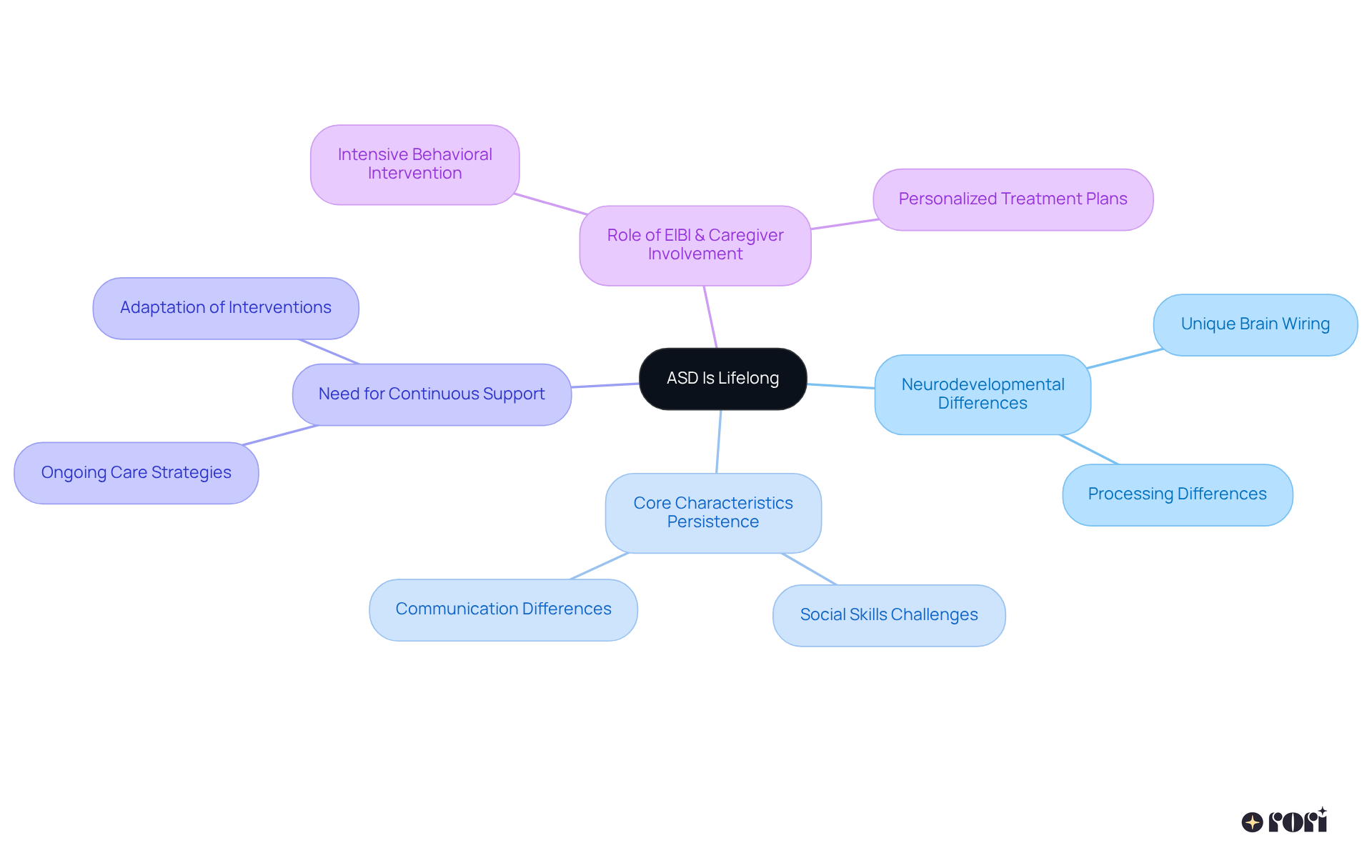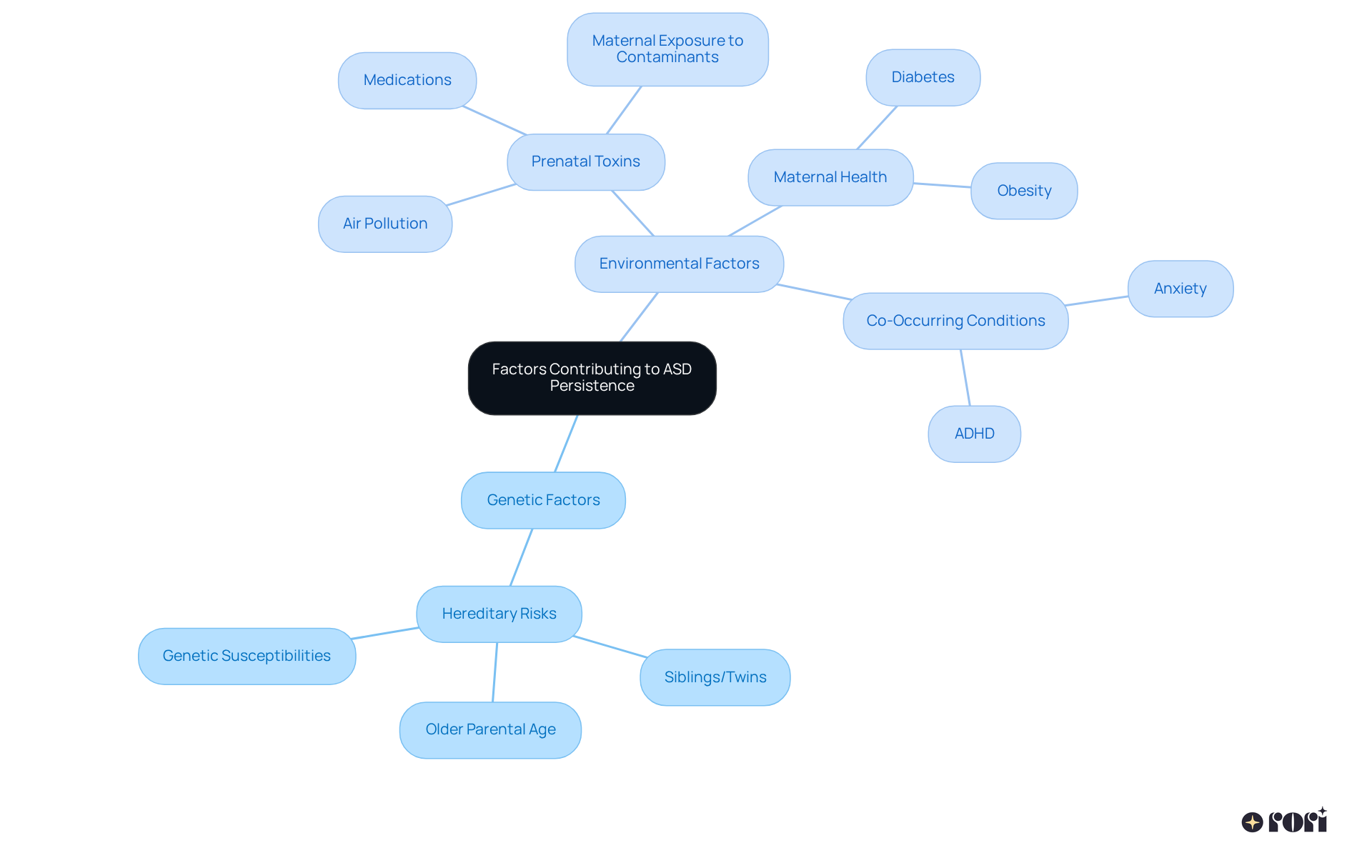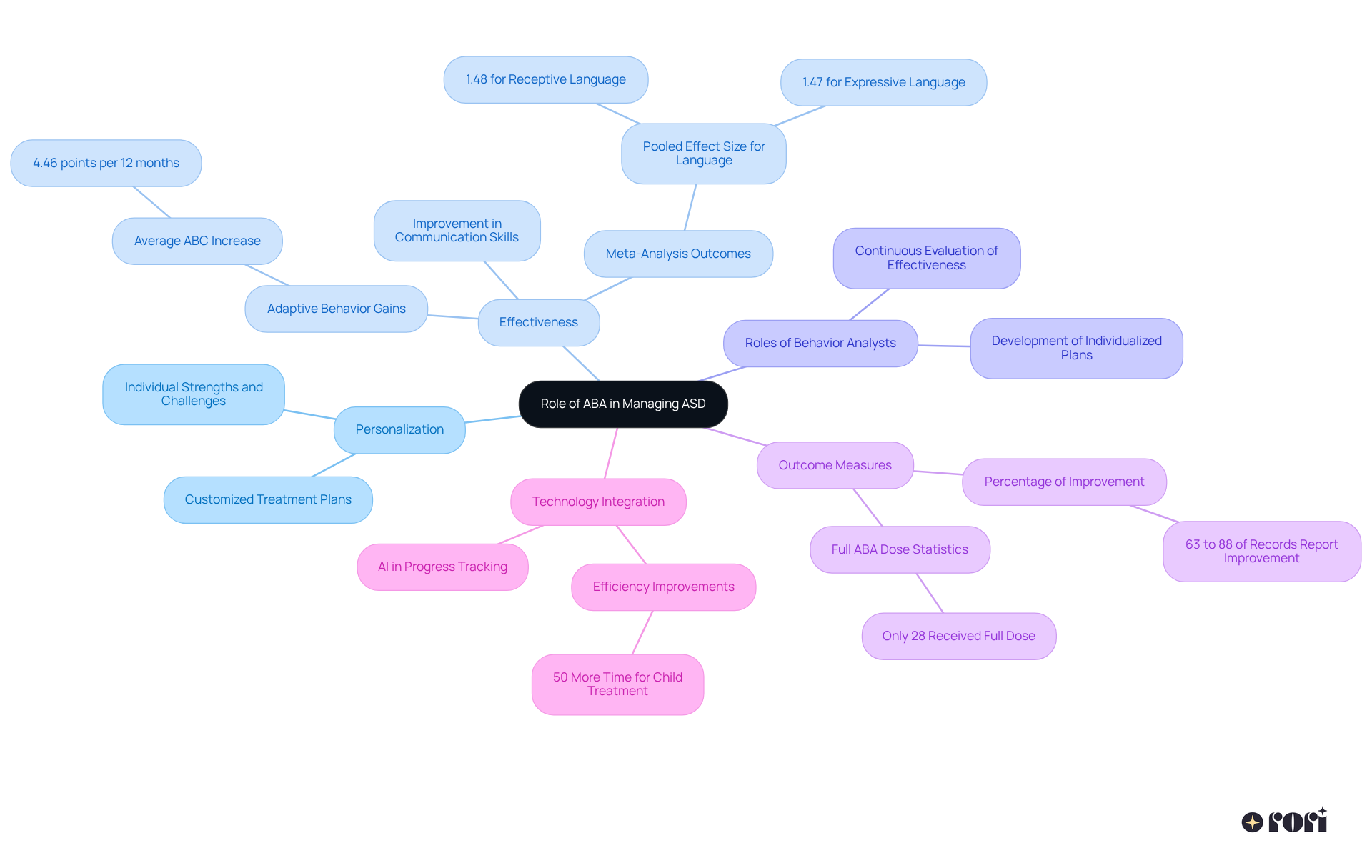Autism Spectrum Disorder (ASD) is a lifelong journey, and it doesn’t simply go away. It’s characterized by unique neurodevelopmental differences that stay with an individual throughout their life. While some may notice improvements in certain skills, the core traits of ASD remain. This is why ongoing support and tailored interventions are so important—they can really enhance the quality of life for those affected.
As parents, you might be wondering about the best ways to navigate this journey. It’s crucial to recognize that you’re not alone. Many families share similar experiences, and there are resources available to help. Let’s explore this together! Remember, every step you take toward understanding and support makes a difference. We’re here to help you every step of the way!
The rising prevalence of Autism Spectrum Disorder (ASD) has sparked important conversations about its lifelong implications and the support systems needed for those affected. As we learn more, it’s essential to explore not just the traits of ASD, but also the ongoing challenges and opportunities for growth throughout life. How can families and caregivers navigate the complexities of this condition while ensuring that individuals with ASD receive the tailored interventions they truly need?
Let’s dive into the multifaceted nature of ASD together! We’ll look at its persistence, the role of effective therapies like Applied Behavior Analysis (ABA), and the importance of continuous support in fostering a fulfilling life for those on the spectrum. We’re here to help you every step of the way!
Autism Spectrum Disorder (ASD) is a complex neurodevelopmental condition that brings unique challenges, especially in social communication. It often comes with restricted interests and repetitive behaviors. Symptoms usually show up in early childhood, and they can vary widely in severity and presentation. According to the DSM-5, diagnosing ASD involves looking for difficulties in:
Recognizing these traits is essential for grasping the hurdles that individuals with ASD face throughout their lives.
Recent studies reveal a significant rise in ASD diagnoses, with about 1 in 31 children in the U.S. currently identified with the disorder. This uptick underscores the importance of early detection and tailored interventions, as timely support can make a world of difference in developmental outcomes. It’s also important to note that there are disparities in diagnosis rates among various racial and ethnic groups. This highlights the need for equal access to diagnostic services and resources, ensuring that every child gets the support they need to thrive. Let’s explore this together and see how we can make a positive impact!

ASD is recognized as a lifelong journey, deeply rooted in neurodevelopmental differences that shape brain functioning from an early age. While some individuals may see improvements in areas like social skills or communication, the core characteristics of ASD often stay with them throughout life, which raises the question: does ASD go away? Research indicates that the brain's unique wiring and processing differences linked to ASD don’t just fade away; this raises the question of whether ASD does go away and may change over time. This evolution highlights the need for continuous support and adapting strategies to meet evolving needs.
At Rori Care, we truly believe in the power of intensive behavioral intervention (EIBI) and the essential role of caregiver involvement in making treatment effective. Our treatment plans are not set in stone; they’re regularly updated based on progress reports to ensure that individuals with ASD receive the personalized support they need to thrive. These insights underline the critical importance of timely intervention and ongoing care, reminding families how vital it is to be actively involved in the therapeutic journey. Let’s explore this together! We’re here to help you every step of the way!

The persistence of Autism Spectrum Disorder (ASD) is shaped by a mix of genetic and environmental factors. Genetic predispositions play a significant role, with certain markers linked to a higher likelihood of developing ASD. For example, studies show that if you have a sibling or twin with autism, your risk of diagnosis increases, which highlights the hereditary nature of the disorder. On the flip side, environmental influences are also crucial; prenatal exposure to toxins, like air pollution or specific medications, can impact neurodevelopment. Interestingly, research suggests that babies born to mothers living near freeways during pregnancy may have a higher risk of developing ASD, especially if they have genetic susceptibilities.
Moreover, maternal health factors, such as obesity and diabetes, have been linked to an increased risk of autism. The interplay between these genetic and environmental factors can complicate the picture, especially when co-occurring conditions like anxiety or ADHD come into play. While early and effective interventions can help ease some challenges, the question of whether 'does ASD go away' often arises, as the underlying neurodevelopmental differences typically remain, making ongoing support and tailored strategies essential for enhancing functioning and quality of life for individuals with ASD.
At Rori Care, our clinical leadership team is made up of experienced professionals in ABA therapy who are dedicated to supporting families through these challenges. We celebrate neurodiversity and strive to provide compassionate support that fosters growth in young individuals. Our team employs evidence-based approaches tailored to each person's unique needs, ensuring that families receive the support and resources they need to tackle challenges related to ASD. As research continues to delve into these complex interactions, we’re here to help you every step of the way! Let’s explore this together!

Applied Behavior Analysis (ABA) is a leading evidence-based approach for understanding whether or not ASD goes away. It focuses on understanding and modifying behavior through reinforcement strategies. This method aims to enhance positive behaviors, like communication and social skills, while also reducing challenging behaviors. What’s great about ABA is that it’s tailored to each individual’s unique strengths and challenges, making it quite effective!
Each behavioral plan is customized to meet the specific needs, strengths, and goals of the individual. This personalized approach leads to more meaningful outcomes. Qualified behavior analysts play a crucial role in developing these individualized plans and continuously evaluating their effectiveness. Research suggests that early and intensive ABA interventions—often requiring 30-40 hours per week for kids under six—can significantly address whether ASD goes away, leading to advancements in language, social abilities, and adaptive functioning.
For instance, individuals with the lowest adaptive levels saw a notable increase of 4.46 points in their Adaptive Behavior Composite (ABC) for every 12 months they engaged in ABA therapy. Isn’t that impressive? Furthermore, a meta-analysis revealed that ABA interventions yield a pooled effect size of 1.48 for receptive language and 1.47 for expressive language. This really underscores its role as a cornerstone of effective autism care, particularly in understanding how ASD goes away.
Additionally, studies show that between 63% and 88% of records reported improvement across various outcome measures in ABA interventions. By setting clear, measurable goals and continuously evaluating progress, ABA equips families and clinicians with data-driven strategies that significantly enhance the quality of life for individuals, especially in understanding whether and how long ASD goes away. It fosters independence and social integration, which is what we all want for our kids!
The integration of cutting-edge AI technology in tracking and generating progress reports further enhances therapy efficiency, freeing up 50% more time for child treatment. While there are challenges, such as high rates of discontinuation and low dosing, addressing these issues is essential to ensure access to these vital services. Let’s explore this together! We’re here to help you every step of the way!

Autism Spectrum Disorder (ASD) is a lifelong journey that deeply affects how individuals communicate and interact with the world. While many may see improvements over time, the core traits of ASD often remain, highlighting the need for ongoing support and personalized interventions. It’s essential for families and caregivers to grasp this enduring nature of ASD, as it helps them provide the right resources and strategies to nurture development and well-being.
This article shines a light on the significance of early detection and intervention, along with the influence of genetic and environmental factors on the persistence of ASD. It showcases the power of Applied Behavior Analysis (ABA) as a tailored approach to managing ASD, illustrating its positive effects on communication, social skills, and overall quality of life. With the rising number of diagnoses, ensuring equitable access to diagnostic services and support is crucial, so every individual with ASD has the opportunity to thrive.
As we delve deeper into the complexities of Autism Spectrum Disorder, it becomes evident that continuous care and adaptable strategies are key. Families, clinicians, and communities need to come together to create an environment that celebrates neurodiversity and supports individuals throughout their lifelong journey. By emphasizing understanding and effective interventions, we can truly make a meaningful impact in the lives of those affected by ASD. Let’s explore this together and make a difference!
What is Autism Spectrum Disorder (ASD)?
Autism Spectrum Disorder (ASD) is a complex neurodevelopmental condition characterized by challenges in social communication, restricted interests, and repetitive behaviors. Symptoms typically appear in early childhood and can vary widely in severity and presentation.
What are the main difficulties associated with ASD?
The main difficulties associated with ASD include challenges in social-emotional reciprocity, nonverbal communication, and forming and understanding relationships.
How prevalent is ASD in the U.S.?
Recent studies indicate that about 1 in 31 children in the U.S. are currently diagnosed with Autism Spectrum Disorder.
Why is early detection of ASD important?
Early detection of ASD is crucial because timely support and tailored interventions can significantly improve developmental outcomes for affected individuals.
Are there disparities in ASD diagnosis rates?
Yes, there are disparities in diagnosis rates among various racial and ethnic groups, highlighting the need for equal access to diagnostic services and resources for all children.